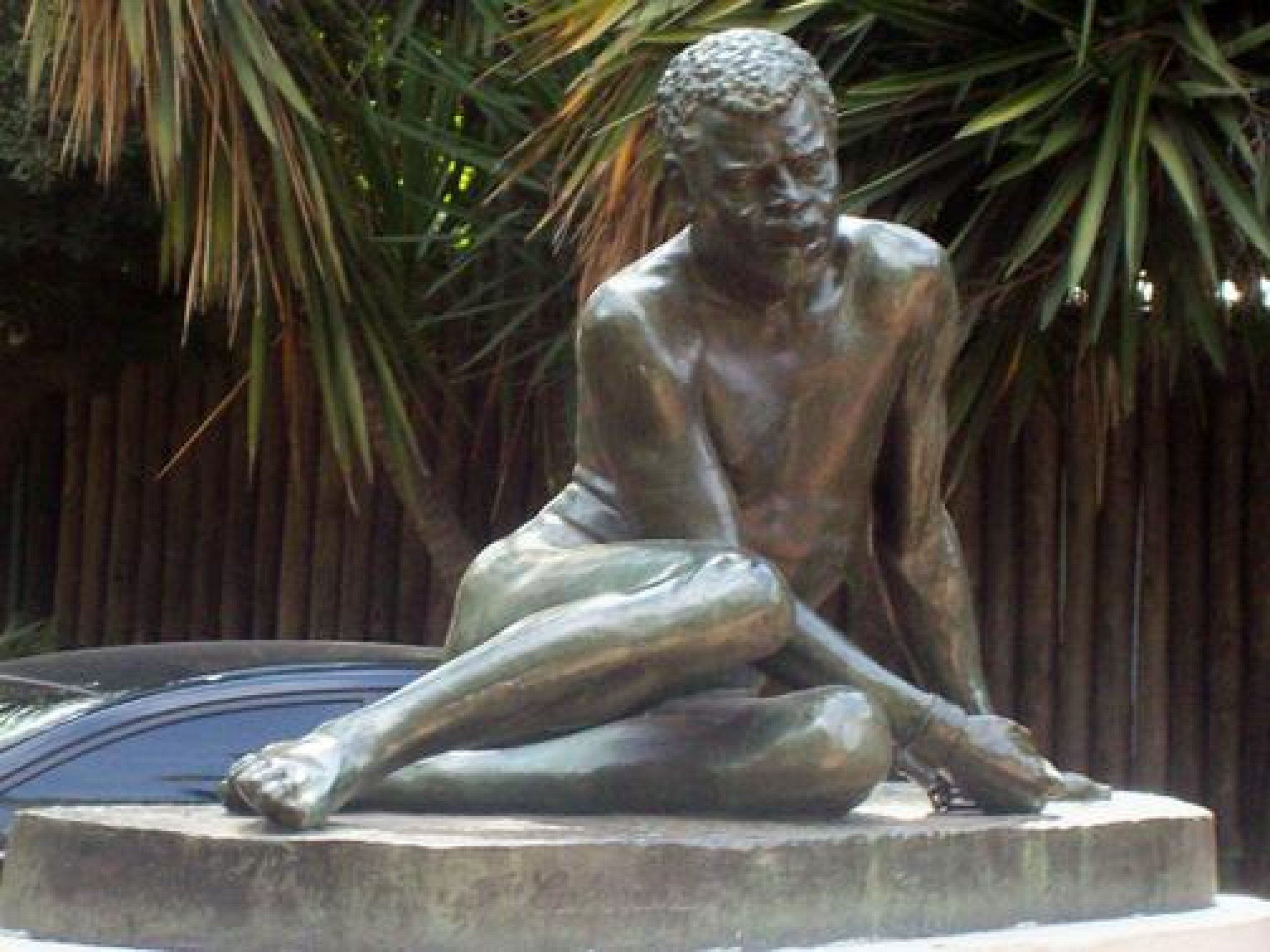You are using an out of date browser. It may not display this or other websites correctly.
You should upgrade or use an alternative browser.
You should upgrade or use an alternative browser.
Rasism in Argentina
- Thread starter MilHojas
- Start date
Rich One
Registered
- Joined
- Jul 17, 2012
- Messages
- 10,479
- Likes
- 7,078
An interview with Ezequiel Adamovsky, Doctor in history from University College London.
(In Spanish)
In the first quarter of the XIX century 30 % of the City of BA inhabitants were Afrodescendiente..!. 5.57
a
mc kenna
Registered
- Joined
- Jul 16, 2013
- Messages
- 926
- Likes
- 1,676
And by the first quarter of the XX century they were pretty much non existent......apparently Spaniards and early argentines sure knew how to eradicate certain races from the territory, i often wonder if this had something to do with the sympathy of members of certain European country seeking refuge here in the late 1940s
Rich One
Registered
- Joined
- Jul 17, 2012
- Messages
- 10,479
- Likes
- 7,078

Afroargentino - Wikipedia, la enciclopedia libre
"From April 6 to 13, 2005 the Pilot Test of Afro-descendants was carried out in the neighborhoods of Monserrat, in Buenos Aires, and in Santa Rosa de Lima, in Santa Fe, verifying that 3% of the population knows that they have ancestors from Black Africa This supports the study of the Center of Genetics of Philosophy and Humanities of the University of Buenos Aires, that estimated in 4.3% the percentage of inhabitants of Buenos Aires and the conurbano that has African genetic markers".
Slaves went to agriculture, livestock, domestic work and, to a lesser extent, crafts. In urban areas, many slaves developed handicrafts for sale, whose revenues perceived their employers. The Buenos Aires neighborhoods of San Telmo and Montserrat hosted many of them, although most of them went inside. The census carried out by Juan José de Vértiz y Salcedo in 1778 showed very high results in the provinces with the highest agricultural production: 54% in the province of Santiago del Estero, 52% in the province of Catamarca, 46% in the province of Salta, 44% in the province of Córdoba, 42% in the province of Tucumán, 24% in the province of Mendoza, 20% in the province of La Rioja, 16% in the province of San Juan, 13% in the province of Jujuy, 9% in the province of San Luis.8 In other provinces they constituted an important part of the population. One of the slums of the city of Corrientes is named "Camba Cua" - of the Guaraní kamba kua, 'cave of the blacks'.
As for the city of Buenos Aires, the same census estimated in 15 719 the number of Spaniards, 1288 that of mestizos and Indians, and 7268 that of mulattos and blacks;
In 1810, 22,793 whites, 9615 blacks and mulattos, and only 150 indigenous people were counted. The most densely populated area of blacks was located in the neighborhood of Montserrat, also called Barrio del Tambor, a few blocks from the current National Congress.
Last edited:
NeoWonk
Registered
- Joined
- Oct 24, 2019
- Messages
- 314
- Likes
- 293
Historians generally attribute two major factors to this sudden “mass disappearance” of black Africans from the country – the deadly war against Paraguay from 1865-1870 (in which thousands of blacks fought on the frontlines for the Argentine military) as well as various other wars; and the onset of yellow fever in Buenos Aires in 1871.

Blackout: How Argentina ‘Eliminated’ Africans From Its History And Conscience
Black Africans, who were a large portion of Argentina's population in the early 19th century, seem to have vanished. Or have they?
Pierre Smith
Registered
- Joined
- Mar 12, 2018
- Messages
- 310
- Likes
- 265
That's an interesting article. The story of the dilution/integration of the Afro-Argentine gene stock into the regular Argentine gene pool was wholly unknown to me. I wonder if people with this background even know about it, if it's a family secret, or what.
Rich One
Registered
- Joined
- Jul 17, 2012
- Messages
- 10,479
- Likes
- 7,078
It's no family secret in the North Eastern Provinces the AFRO descendents where more than 50% . These Afro's didn't disappear they blended in as a mestizo race.
Wikipedia/Google
"The census carried out by Juan José de Vértiz y Salcedo in 1778 showed very high results in the provinces with the highest agricultural production: 54% in the province of Santiago del Estero, 52% in the province of Catamarca, 46% in the province of Salta, 44% in the province of Córdoba, 42% in the province of Tucumán, 24% in the province of Mendoza, 20% in the province of La Rioja, 16% in the province of San Juan, 13% in the province of Jujuy, 9% in the province of San Luis.8 In other provinces they constituted an important part of the population. One of the slums of the city of Corrientes is named "Camba Cua" - of the Guaraní kamba kua, 'cave of the blacks'.
Below report by Ministerio de Cultura..!
The influence of the Afro culture is found in our daily lives, in language, in music, ideas and even gastronomy. Learn the history of Afro-descendants in Argentina.

 www.cultura.gob.ar
www.cultura.gob.ar
The words that we use in Argentina all the time as mina, tarima, bugia, milonga or marote, are all of African origin. The achuras, which so much distinguish the guacho, were a food rescued by African women. During the nineteenth century, more than ten newspapers of the black community circulated: La Broma, El Unionista, El Proletario, La Juventud, among others, which influenced the thinkers of the time. However, these contributions have been invisible; and the same happened with the tango, to which his African belonging was taken away ”.
Best known Expression .. "Trabajar en Negro"
Wikipedia/Google
"The census carried out by Juan José de Vértiz y Salcedo in 1778 showed very high results in the provinces with the highest agricultural production: 54% in the province of Santiago del Estero, 52% in the province of Catamarca, 46% in the province of Salta, 44% in the province of Córdoba, 42% in the province of Tucumán, 24% in the province of Mendoza, 20% in the province of La Rioja, 16% in the province of San Juan, 13% in the province of Jujuy, 9% in the province of San Luis.8 In other provinces they constituted an important part of the population. One of the slums of the city of Corrientes is named "Camba Cua" - of the Guaraní kamba kua, 'cave of the blacks'.
Below report by Ministerio de Cultura..!
The influence of the Afro culture is found in our daily lives, in language, in music, ideas and even gastronomy. Learn the history of Afro-descendants in Argentina.

El origen afro de la Argentina
El Censo de 1778 arrojó que el 46% de la población argentina tenía origen africano. La influencia de su cultura la encontramos en nuestra vida cotidiana, en el lenguaje, en la música, las ideas y hasta la gastronomía. Conocé la historia de los afrodescendientes en Argentina.
The words that we use in Argentina all the time as mina, tarima, bugia, milonga or marote, are all of African origin. The achuras, which so much distinguish the guacho, were a food rescued by African women. During the nineteenth century, more than ten newspapers of the black community circulated: La Broma, El Unionista, El Proletario, La Juventud, among others, which influenced the thinkers of the time. However, these contributions have been invisible; and the same happened with the tango, to which his African belonging was taken away ”.
Best known Expression .. "Trabajar en Negro"
Pierre Smith
Registered
- Joined
- Mar 12, 2018
- Messages
- 310
- Likes
- 265
Right, but you walk down the street in Buenos Aires and in a given day it would not be unusual not to see a single identifiably black person. Pretty much everyone is darker than I am, but essentially nobody looks black unless they're from somewhere else. But statistically, probably many of those non-black people you're seeing do indeed have African genes from the not to distant past!
Rich One
Registered
- Joined
- Jul 17, 2012
- Messages
- 10,479
- Likes
- 7,078
Right, but you walk down the street in Buenos Aires and in a given day it would not be unusual not to see a single identifiably black person. Pretty much everyone is darker than I am, but essentially nobody looks black unless they're from somewhere else. But statistically, probably many of those non-black people you're seeing do indeed have African genes from the not to distant past!
What you see in the Streets are:

Afro-Argentines - Wikipedia
- Mulato: (proviene del término “mula”): cruza de negro/a con blanco/a.
- Tercerón: cruza de blanco/a con mulato/a.
- Cuarterón: cruza de blanco/a con tercerón/ona.
- Quinterón: cruza de blanco/a con cuarterón/ona.
- Zambo: cruza de negro/a con aborigen.
- Zambo prieto: que tenía fuerte color negro.
- Salto atrás: cuando un hijo era más negro que sus padres.
On October 9, 2006, the Afro-descendants and Africans Forum was created in Argentina, with the aim of promoting social and cultural pluralism and the fight against discrimination against this population. In that act, the president of the National Institute against Discrimination, Xenophobia and Racism (INADI), María José Lubertino, recognized the invisibility of Afro-Argentines with the following words:
Afros in Argentina have been invisible and today remain invisible. This is the result of a diaspora process produced by slavery and its transformation into servitude ... The current social stratification places them in poverty.
Racism in Argentina related to skin tone
Racism in Argentina
In Argentina, as in the other countries of America, racism related to the skin tone or the African origin of people dates back to the times of colonial domination. In the caste regime imposed by Spain, the descendants of people from black Africa occupied an even lower place than the descendants of people belonging to the original peoples.
Colonial racism passed to a certain extent to the Argentine culture, as shown by certain phrases included in the national literature. During the mid-nineteenth century, death duels were common between mongrel and Afro-Argentine gauchos. In Argentine literature, these disputes were represented with racist dye in a famous passage from José Hernández's book, Martín Fierro (La ida), published in 1870, in which the main character duel with a black gaucho after insulting his girlfriend and insulting him with the following verse:
God made whites,
San Pedro made mulattos,
The devil made the blacks
To blight of hell. ?
Several years later, in 1878 Hernández published the second part of his famous book, in which Fierro holds a famous payada in which he discusses philosophical issues (such as life, creation, existence, etc.) with another black gaucho that results Be a brother of the previous one. Demonstrating the evolution of the character and probably of Argentine society in the process of receiving millions of European immigrants, this time Martín Fierro avoids the duel when it seemed inevitable.
Aztangogirl
Registered
- Joined
- Aug 19, 2016
- Messages
- 702
- Likes
- 1,087
I see black people all the time. On the subte. On the street selling sunglasses. Walking down the street.
